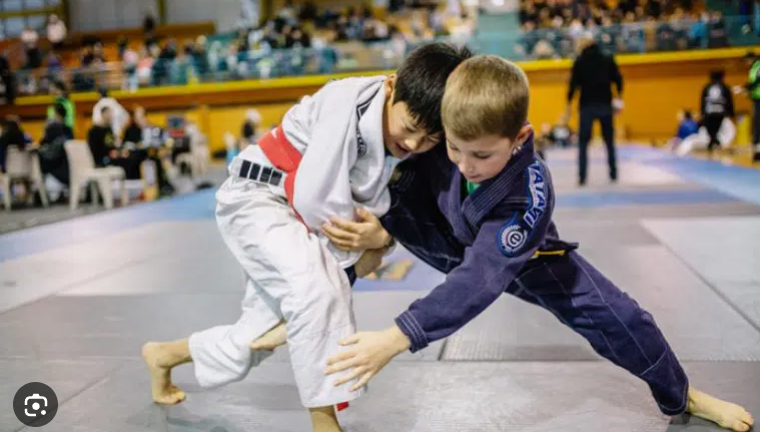Honing its roots from the ancient Buddhist monks in India, jiu jitsu has greatly developed and changed through time and geography, acquiring a significant place in Japanese and Brazilian martial art practices. It is a kind of self-defensive martial art focusing on ground combat, centered around the principle of using an aggressor’s own force against themselves. These subtleties of the art form make it suitable for people of all ages and physical statues, leading to its increasing popularity among both adults and children over recent decades.
In recent years, we’ve witnessed a significant rise in jiu jitsu competitions specifically designed for children. This increased interest is attributed not only to the physical benefits of the sport, such as improved fitness and strength, but also because of the mental and life skills it imparts on young minds. Children learn about discipline, respect, perseverance, and problem-solving while practicing jiu jitsu. This article aims to guide parents through understanding jiu jitsu competitions for children, from preparation to performance, while underlining the inherent benefits for a child’s overall development.
Table of Contents
An Overview of Jiu Jitsu
Jiu jitsu operates on a set of principles that revolve around leverage and technique, rather than sheer physical power. This makes kid’s jiu-jitsu accessible for children who are still developing their physical strength. The basic principle is to control your opponent through techniques that force them to submit, generally through strategically applied pressure. The ground-based nature of jiu jitsu also means that size and weight advantages of the opponent are minimized, thus teaching children to rely on skill more than force.
As parents, it is essential to understand the manifold benefits of jiu jitsu for kids. Aside from the obvious physical benefits like enhanced strength, improved flexibility, and better overall fitness, jiu jitsu can contribute significantly towards a child’s mental and emotional development. It fosters qualities such as self-discipline, self-confidence, and resilience among kids. Furthermore, helps to equip them with fun, yet practical skills, such as the ability to defend themselves. Jiu jitsu competitions serve to educate children on how to handle pressure, thrill and disappointment, thus equipping them for real-world situations while also providing an enjoyable platform to showcase and sharpen their skills.
Preparing Kids for Jiu Jitsu Competitions
Understanding the physical fitness prerequisites for children participating in jiu jitsu is a key aspect of preparation. Jiu jitsu is a physically intensive sport that requires good overall fitness, including strength, flexibility, and stamina. Although the techniques involved are more about skill and less about brute force, physical fitness can’t be overlooked. Learning basic techniques forms the bedrock of any jiu jitsu training. Kids are taught a series of techniques that involve pins, controls, escapes, and submissions. The techniques are designed to empower weaker or smaller individuals to defend against larger or stronger opponents.
Mental preparedness is equally important to physical preparation in jiu jitsu competitions. Children must be educated about handling both victories and losses sportingly and about the importance of perseverance in the face of challenges. Coping techniques, self-belief, and focus are values that are fostered through such preparations. Further, parents also need to ensure kids have the appropriate gear for competitions. This includes a well-fitted Gi (jiu jitsu uniform), a belt indicating their ranking, and mouthguards for safety. Parents must encourage cleanliness and ensure the Gi is clean for every training session or match, reinforcing discipline and respect, the core ethics of martial arts.
During the Competition
A thorough understanding of basic competition rules is essential for both parents and children. The nature of the scoring system, how points are awarded for specific positions and movements, the penalties for certain actions, and the ground rules for arguments and communication with referees are among the primary aspects that need to be understood. It’s also important for parents to guide their children on sportsmanship and ethical conduct.
Parents should set appropriate expectations for the day of competition. Matches usually last between 3 to 5 minutes for children, depending on their age group, but it can change according to the competition’s rules. The day can be long and tiring, with waiting times between matches. Children may need to maintain their weight if their division is weight-specific, which will affect mealtimes. Moving up through the rounds, the intensity and pressure will also increase. During the event, it is the parent’s job to provide moral support, encouragement, and comfort to their child. Being present, positive, and patient is key to helping your child execute their best performance on the mat. Parents should respect the coaches’ role during the competition and avoid coaching from the sidelines.
Post-Competition
Discussing the competition results with your child requires sensitivity, honesty, and encouragement. Regardless of the outcome, focus on the child’s effort, improvement, and commitment, and not purely on whether they won or lost. It is important to communicate that losing a match does not equate to failure, but rather it provides an opportunity for learning and growth. Help your child analyze their performance, identify strengths and point out areas for refinement. This exercise is not about criticism but constructive feedback that promotes personal growth. Reinforcing sportsmanship is a key element of post-competition communication. Encourage your child to maintain an attitude of respect towards coaches, referees, and adversaries, irrespective of the contest result. Victory should be celebrated with humility, and defeat acknowledged with grace, reinforcing that the learning experience is as meaningful – if not more so – than the outcome. Lastly, begin the discussion to prepare for the next competition. Now that they have experienced first-hand what a jiu jitsu competition feels like, they can better outline their training objectives for the future. Create a plan emphasizing gradual, consistent improvement rather than immediate perfection. Remember, the beauty of jiu jitsu is rooted in its principles of resilience, determination, and continuous learning.
Jiu jitsu competitions for kids offer an exceptional avenue for growth, learning, and development. Parents are responsible for guiding their kids through their own competitive fun, from understanding the sport to supporting their kids during training and competitions. With the right approach, the experience can foster a myriad of life skills in the child, making the sport an outstanding investment in their physical, mental, and emotional growth.







